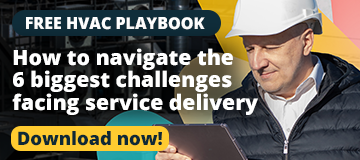
CMMS Selection: A Step By Step Guide
If you want to select CMMS (Computerised Maintenance Management System) software to help you manage your maintenance, your choice can be very confusing. There are dozens of CMMS software providers on the market, and selecting the right one for your organisation is essential but tricky and daunting. To help you select the right CMMS for your business, we put together this guide that outlines every aspect of identifying which CMMS is right for you.
Step 1: Understanding Your Requirements
The first step is understanding what you need to get out of the software. Every business is unique and will have different requirements, so you need to examine your maintenance process closely and assess which areas need improvement. Then, you can select a CMMS system that will improve those areas.
The areas you should look at include:
- How you handle asset management
- How maintenance schedules are built
- How inventory is managed
- How you report on your maintenance activities
Assessing Your Asset Management
Understanding what assets, you're working with is the starting point for assessing your asset management. Assets range from heavy machinery used in manufacturing to vehicles and entire buildings and facilities. The type of assets you are responsible for should be one of the factors you consider when selecting a CMMS system.
At a minimum, you will need:
- The ability to catalogue all your assets
- A way to track maintenance history
- A central database to store certificates and documentation for assets
Depending on the type of assets you need, you may need to consider additional elements. For example, if you work in the HVAC (Heating, Ventilation, and Air Conditioning) sector, there are many legal requirements for F-Gases used in the assets you work with. A CMMS for this sort of business would need to have F-Gas-specific modules or functions that make complying with regulations easier.
Understanding Your Maintenance Scheduling
Your CMMS software needs to help you develop a maintenance strategy that delivers results. By taking stock of your maintenance scheduling as part of your CMMS selection process, you will be able to determine what sort of approach to maintenance you are taking and how your CMMS needs to assist you in maintaining and improving it.
There are three types of maintenance strategies that you need to look at as part of your assessment.
1. Reactive Maintenance Scheduling – Booking maintenance work when an asset break
2. Preventive Maintenance Scheduling - Booking maintenance work proactively to limit asset downtime
3. Predictive Maintenance – Using cloud-based technology and the Internet of Things, you can schedule maintenance work based on real-time data, so you book asset maintenance only when needed.
Whatever stage your maintenance strategy is at, your CMMS needs to provide you the flexibility to evolve as your operational needs change. So, ensure your CMMS system can help migrate you to the next stage. For predictive maintenance, you will need a more advanced form of CMMS software that integrates with the Internet of Things and uses real-time monitoring and data analysis to forecast potential failures.
Understanding Your Inventory
When selecting a CMMS system, consider how you currently manage your stock and inventory. Effective job management relies on having the necessary parts to complete a job, and with a reliable inventory management approach, jobs will be completed efficiently.
CMMS systems always have an element of inventory management, but additional features may be needed depending on the complexity of the work you do. For example, a business that handles assets across multiple sites must be able to track inventory across every site they are responsible for. This allows them to know precisely what is available at which site and if needed, move stock around to prevent optional parts from being purchased.
Reporting and Analytics
The maturity of your reporting will determine what sort of CMMS software you need to select. You will need to ensure that you can replicate your current reporting within your new CMMS system.
Suppose your reporting is limited and uses Excel spreadsheets. In that case, you need your CMMS to provide you with solid reporting capabilities to make accessing data easy and present that data in easy-to-understand ways so you can start to make data-driven decisions.
If your current reporting is more advanced, then you will need your CMMS to provide customisable reports for stakeholder management and automation of reports. This empowers your organisation to maintain high levels of efficiency and compliance.
Step 2: Researching and Comparing CMMS Providers
After identifying your needs, you can select the CMMS software provider. At this stage of the process, you'll need to look at a few different areas to determine which Vendors you should be seriously considering:
1. Features
2. Ease of Use
3. Scalability
4. Cost
5. Vendor Reputation
What Features the CMMS has
When evaluating the feature set of a CMMS to decide which CMMS to select, it's essential to align the system's capabilities with your organisational needs. A comprehensive feature set should cater to all aspects of maintenance management, including asset management, work order management, maintenance scheduling, inventory management, and reporting. However, it's crucial to differentiate between essential features and those that are nice to have. (this is where your assessments come in).
Selecting and implementing a CMMS bloated with unnecessary features can increase complexity, increase costs, and potentially detract from user experience. Instead, focus on choosing a system that provides the necessary functionality to improve maintenance operations without overcomplicating the user interface or inflating the budget. For example, if your maintenance strategy heavily relies on predictive maintenance, prioritise CMMS options that offer robust analytics and IoT integration capabilities. Tailoring the feature set to match your requirements ensures you invest in capabilities that deliver real value to your organisation.
How Easy is it to Use?
To maximise the usage of your selected CMMS, you need your new software to be easy to use. If it isn't, you'll quickly find that your team members (both in the office and the field) won't use it because it's too cumbersome. If it's easy to use, your team will use the software more, and you'll benefit from it.
When assessing the software's ease of use, you need to consider things like the user interface (UI). A system that is easy to navigate and intuitive will reduce your team's learning curve, so look for logically organised, clearly labelled interfaces where all the key features you have defined as essential for your CMMS selection are easily accessible.
You will also want to consider how different team members access the system. Not everyone will be looking at the system on a desktop, so consider how team members in the field will see and use the software. Ideally, the CMMS you select should have a mobile app so that field use is as simple and efficient as possible.
Scalability
When selecting your CMMS, scalability is a crucial factor, as your maintenance management needs will evolve as your organisation grows. The ideal CMMS should be able to scale up to accommodate additional assets, increased maintenance activities, and a growing user base without significant performance issues or the need for a system overhaul. Consider whether the CMMS can handle an expanding inventory of assets, more complex maintenance schedules, and an increased volume of data over time. Additionally, the system should offer flexible user management and permissions settings to accommodate an expanding team.
Cost
The cost of a CMMS encompasses more than just the initial purchase price; it includes setup fees, monthly or annual subscription costs, and potential charges for additional features, users, or support. When analysing costs, consider the total cost of ownership over the system's expected lifespan. Try to opt for a transparent pricing model that outlines what is included in the base price and what incurs additional charges.
Be wary of low upfront costs that may lead to higher expenses for essential features or support. It is also important to evaluate the return on investment (ROI) that the CMMS can deliver through increased efficiency, reduced downtime, and cost savings. Selecting a CMMS with a cost structure that aligns with your budget and offers clear value for your investment is critical for ensuring the long-term success of your maintenance management strategy.
Vendor Reputation and Support
The reputation of a CMMS vendor and the quality of support they offer indicate how reliable the system will be and the company's commitment to its customers. Research each vendor's track record and focus on their stability in the market, customer satisfaction, and responsiveness to customer needs. By reading customer reviews and case studies, you can gain insights into the experiences of other businesses that use the system. Next, you should look at the level of support and training the vendor provides, including the availability of resources such as online tutorials and user manuals. A vendor that offers comprehensive support and training ensures that you can maximise the benefits of your CMMS and promptly address any issues that arise. Choosing a vendor with a strong reputation and a commitment to customer support enhances the reliability of your CMMS and supports a successful implementation and ongoing operation.
Book Demos for Your Shortlist
Once you have a shortlist of vendors that seem to meet your needs, you'll need to book demos so you can see and experience the software first-hand. The demos will likely be conducted by a vendor consultant, so you can take advantage of their expertise in the product and ask them questions you need answered.
It's recommended that you focus your questions on the core features that you've established are essential from your previous analysis. Get them to show you the features you are after and pay attention to how easy it is to access them. You will be able to tell if the User Interface is easy to use based solely on the demo, but you can always ask for a trial account to play around with as well.
The other area you should cover on your demo is to discuss what sort of support and training the vendor offers. This will be vital, as you will need support to implement the CMMS system you've selected properly, and identifying if the support structures are limited will help you dodge a bullet that could cost much money.
Once your demos have been completed you just need to make your decision. There are no hard and fast rules on this front. Just take what you saw in the demos and assess the software against your lists of requirements.
If you are looking to select a CMMS system for your organisation, make sure to talk to our consultants and book a demo so we can show you how Joblogic can improve your approach to maintenance.


.png)